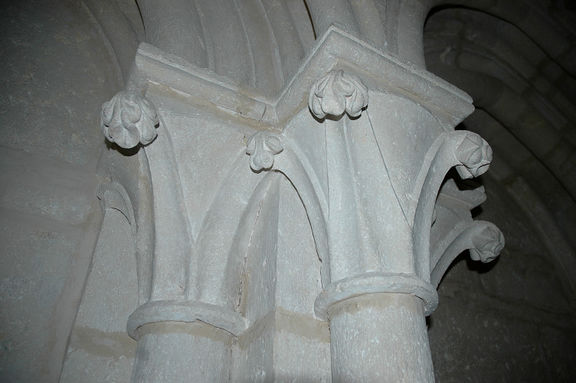Difference between revisions of "Žiče Charterhouse"
(map, contacts) |
|||
| Line 9: | Line 9: | ||
| street = Špitalič pri Slovenskih Konjicah 9 | | street = Špitalič pri Slovenskih Konjicah 9 | ||
| town = SI-3215 Loče | | town = SI-3215 Loče | ||
| − | | map = http://www.openstreetmap.org/?lon=15.42238&lat=46.33774&zoom=16&layer=mapnik | + | | map =http://www.openstreetmap.org/?lon=15.42238&lat=46.33774&zoom=16&layer=mapnik |
| telephone = 386 (0) 3 752 3732, 386 (0) 51 444 141 | | telephone = 386 (0) 3 752 3732, 386 (0) 51 444 141 | ||
| fax = 386 (0) 3 759 3111 | | fax = 386 (0) 3 759 3111 | ||
Revision as of 22:04, 14 August 2018
History
Carthusian Order is a Catholic order, founded in 1084, which chooses isolated locations since it is devoted to solitude and contemplation. In 1160, a group of Carthusians came from the French Grande Chartreuse near Grenoble to Konjice, making the Žiče Charterhouse the first Carthusian monastery in the Middle Europe. In 1165 it was affirmed by the authorities, Ottokar III of Styria, and his son, Duke Ottokar IV of Styria. At first, the monastic revenues were small, but after the 13th century, at the time of the Great Christian Schism, Žiče Chaterhouse became the seat of the Prior General of Carthusian Order and consequently, in the century that followed, a European cultural and political centre.
In the 16th century, at the time of peasant uprisings and Ottoman invasions, the monastery was attacked, which marked the beginning of its decline. In 1782 the Emperor Joseph II abolished it, as the contemplative monastic orders were no longer compatible with the Enlightenment reforms. In 1826, its ruins were bought by Prince Weriand of Windisch-Graetz and remained this family’s property until the end of World War II. Today's owner is the Municipality of Slovenske Konjice.
Cultural heritage
Žiče Charterhouse is a medieval monastery marked by typical gothic Carthusian architecture. The whole complex – walls with towers, both monasteries and the church – was built in this style.
As Carthusians devoted their lives to writing, copying and illuminating manuscripts, the monastery had a Library with more than 2.000 volumes, mostly manuscripts, some of them displaying colourful painted initials and other illuminated elements, known as distinctive Žiče style. Only a fraction of the library, about 120 manuscripts and 100 fragments, survived.
An exceptional cultural monument is also the monastery’s guesthouse Gastruž Inn, erected in 1467 and still open today. In this guesthouse, the oldest not only on Slovenian territory, but also one of the oldest active inns in Central Europe, you can still smell monastic dishes.
Because of the reconstruction work, the monastery – its well-preserved parish church, the renovated Upper monastery, the monastery cellar with winery, apothecary’s shop with old herbal remedies – is slowly becoming alive again. From 2007, it houses an exhibition “The Cultural Heritage of Žiče Charterhouse”, prepared by Nataša Golob, an impressive museum collection and audio-viewing. The summer months are enlivened by a range of gastronomic events, concerts, spectacular historical recreations, wine days and other events. From time to time, participants in spiritual retreats are welcomed within the renovated monastery walls.



